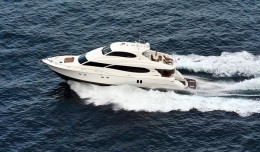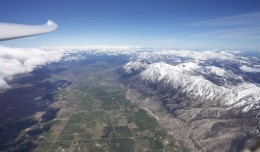This article originally appeared on AirlineReporter.com.
If you’ve ever flown into Reno-Tahoe International Airport (RNO) when the winds are howling out of the west, you know that the approach and landing can be…sporty. In fact, it sometimes gets so turbulent that the mainline jets head for Sacramento International Airport (SMF), leaving RNO to Alaska Airlines’ Bombardier Q400 turboprops, which can use RNO’s short crosswind runway. I’ll happily fly into RNO from SEA on the AS Q400s on those bouncy days.
The bumps can mean that conditions are great for soaring. Yes – I’m a glider pilot, and the region around Reno is world-famous for those who love to fly without an engine. It’s an amazing sensation, soaring in our ocean of air. Some flights are like a dream – I just have to think about moving the control stick, and off I go, hunting for lift, as if the glider’s wings are attached to my shoulders.

Soaring NV’s ASK-21, with a Duo Discus in the background, at the Minden-Tahoe Airport.
When you think of gliding, you might have an image of a pilot running towards the edge of a cliff, ready to leap into the air while hanging from a fabric-covered wing. Yes, there are those out there who enjoy hang-gliding, in aircraft that are at the light and slow end of the soaring spectrum. Other than a lack of an engine, they don’t have much in common with a modern high-performance glider.
Modern gliders are built from composite materials, including fiberglass and carbon fiber. Those materials allow the designers to sculpt fuselages with elegant and low-drag curves, and to make long, thin, and very strong wings. Almost all gliders are manufactured in Europe, and wingspans are measured in meters. For example, the Alexander Schleicher ASK-21 two-seat glider (pictured) has a 17-meter/55-foot wingspan. Maximum speed is 151 knots, but you’ll circle to climb in a thermal at 45-50 knots, and fly between thermals at around 100 knots. At full gross weight, with two on board, the glider weighs 600 kg, a bit over 1,300 lbs. A new ASK-21 will set you back about $120,000.
Click here to read the rest of this article at AirlineReporter.com.







